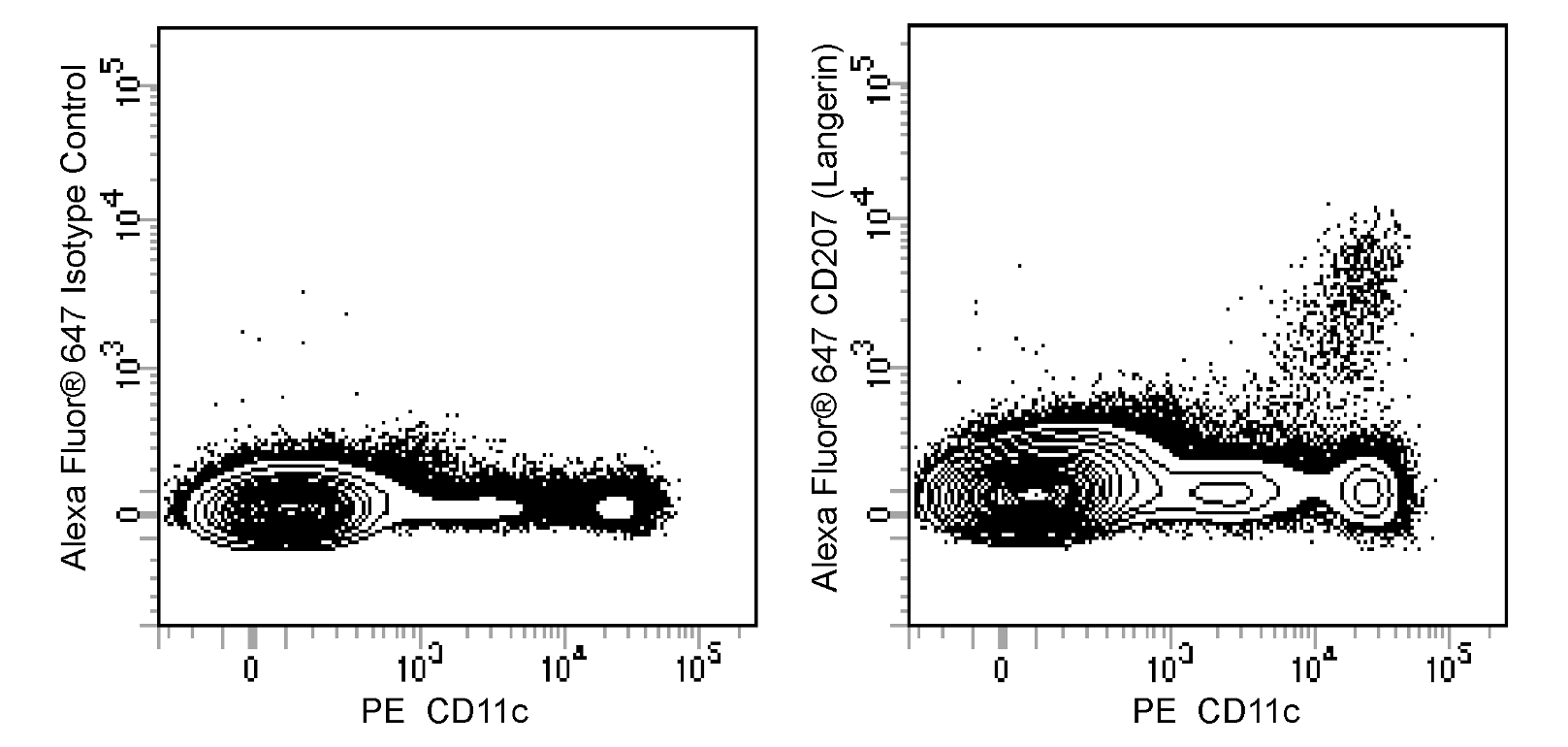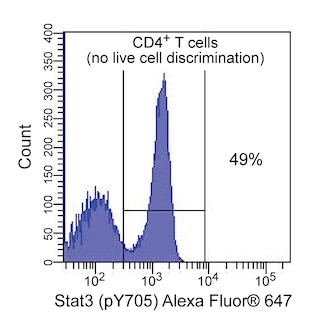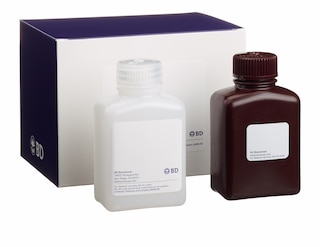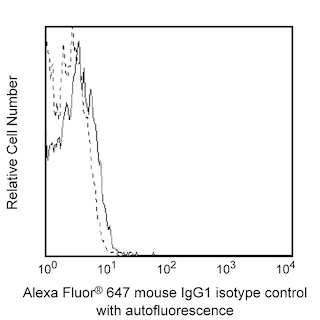-
Training
- Flow Cytometry Basic Training
-
Product-Based Training
- BD FACSDiscover™ S8 Cell Sorter Product Training
- Accuri C6 Plus Product-Based Training
- FACSAria Product Based Training
- FACSCanto Product-Based Training
- FACSLyric Product-Based Training
- FACSMelody Product-Based Training
- FACSymphony Product-Based Training
- HTS Product-Based Training
- LSRFortessa Product-Based Training
- Advanced Training
-
- BD FACSDiscover™ S8 Cell Sorter Product Training
- Accuri C6 Plus Product-Based Training
- FACSAria Product Based Training
- FACSCanto Product-Based Training
- FACSLyric Product-Based Training
- FACSMelody Product-Based Training
- FACSymphony Product-Based Training
- HTS Product-Based Training
- LSRFortessa Product-Based Training
- United States (English)
-
Change country/language
Old Browser
This page has been recently translated and is available in French now.
Looks like you're visiting us from {countryName}.
Would you like to stay on the current country site or be switched to your country?
BD Pharmingen™ Alexa Fluor® 647 Mouse Anti-Mouse CD207 (Langerin)
Clone 81E2 (also known as AB82_90.81E2.1F6)
(RUO)



Multicolor flow cytometric analysis of mouse CD207 (Langerin) expression on mouse spleen cells. Mouse spleen cells were prepared using collagenase treatment followed by washing. The cells were stained with BD Horizon™ Fixable Viability Stain 450 (Cat. No. 562247), and then fixed and permeabilized using the BD Cytofix/Cytoperm™ Fixation/Permeabilization Solution Kit (Cat. No. 554714). The cells were stained with PE Hamster Anti-Mouse CD11c (Cat. No. 553802/557401/561044), BD Horizon™ PE-CF594 Rat Anti-Mouse CD49b (Cat. No. 562453), FITC Rat Anti-Mouse CD45R/B220 (Cat. No. 553088/553087/561877), Alexa Fluor® 700 Rat Anti-Mouse Ly-6G/6C (Cat. No. 557979), and PerCP-Cy™5.5 Hamster Anti-Mouse CD3e (Cat. No. 551163/561108) antibodies and either Alexa Fluor® 647 Mouse IgG1, κ Isotype Control (Cat. No. 557714; Left Panel) or Mouse Anti-Mouse CD207 antibody (Cat. No. 564937; Right Panel). Two-color flow cytometric contour plots showing the correlated expression of CD11c versus CD207 (Langerin) [or Ig Isotype control staining] were derived from Fixable Viability Stain 450-negative and CD49b- CD45R/B220- Ly6G/6C- CD3- gated events with the forward and side-scatter light characteristics of intact cells. Flow cytometric analysis was performed using a BD LSRFortessa™ Cell Analyzer System.


BD Pharmingen™ Alexa Fluor® 647 Mouse Anti-Mouse CD207 (Langerin)

Regulatory Status Legend
Any use of products other than the permitted use without the express written authorization of Becton, Dickinson and Company is strictly prohibited.
Preparation And Storage
Product Notices
- Since applications vary, each investigator should titrate the reagent to obtain optimal results.
- An isotype control should be used at the same concentration as the antibody of interest.
- Alexa Fluor® 647 fluorochrome emission is collected at the same instrument settings as for allophycocyanin (APC).
- Alexa Fluor® is a registered trademark of Molecular Probes, Inc., Eugene, OR.
- The Alexa Fluor®, Pacific Blue™, and Cascade Blue® dye antibody conjugates in this product are sold under license from Molecular Probes, Inc. for research use only, excluding use in combination with microarrays, or as analyte specific reagents. The Alexa Fluor® dyes (except for Alexa Fluor® 430), Pacific Blue™ dye, and Cascade Blue® dye are covered by pending and issued patents.
- Caution: Sodium azide yields highly toxic hydrazoic acid under acidic conditions. Dilute azide compounds in running water before discarding to avoid accumulation of potentially explosive deposits in plumbing.
- For fluorochrome spectra and suitable instrument settings, please refer to our Multicolor Flow Cytometry web page at www.bdbiosciences.com/colors.
- This product is provided under an intellectual property license between Life Technologies Corporation and BD Businesses. The purchase of this product conveys to the buyer the non-transferable right to use the purchased amount of the product and components of the product in research conducted by the buyer (whether the buyer is an academic or for-profit entity). The buyer cannot sell or otherwise transfer (a) this product (b) its components or (c) materials made using this product or its components to a third party or otherwise use this product or its components or materials made using this product or its components for Commercial Purposes. Commercial Purposes means any activity by a party for consideration and may include, but is not limited to: (1) use of the product or its components in manufacturing; (2) use of the product or its components to provide a service, information, or data; (3) use of the product or its components for therapeutic, diagnostic or prophylactic purposes; or (4) resale of the product or its components, whether or not such product or its components are resold for use in research. For information on purchasing a license to this product for any other use, contact Life Technologies Corporation, Cell Analysis Business Unit Business Development, 29851 Willow Creek Road, Eugene, OR 97402, USA, Tel: (541) 465-8300. Fax: (541) 335-0504.
- Please refer to http://regdocs.bd.com to access safety data sheets (SDS).
- Please refer to www.bdbiosciences.com/us/s/resources for technical protocols.
Companion Products





The 81E2 monoclonal antibody specifically binds to CD207 which is also known as Langerin, Langerhans cell specific c-type lectin, or C-type lectin domain family 4 member K (Clec4K). CD207 is a type II transmembrane glycoprotein that belongs to the C-type lectin family. CD207 is selectively expressed by Langerhans cells, an immature dendritic cell type that is found in the epidermis and mucosal epithelia, and by some other dendritic cell subsets. CD207 is expressed on the cell surface membrane and by intracellular Birbeck granules whose formation depends on CD207. CD207 binds to certain surface carbohydrates that are expressed by microbes. It appears to play a role in the uptake of these microbes for subsequent processing and microbial antigen presentation to T cells.
Development References (3)
-
Bursch LS, Wang L, Igyarto B, et al. Identification of a novel population of Langerin+ dendritic cells. J Exp Med. 2007; 204(13):3147-3156. (Biology). View Reference
-
Flacher V, Douillard P, Aït-Yahia S, et al. Expression of langerin/CD207 reveals dendritic cell heterogeneity between inbred mouse strains. Immunology. 2008; 123(3):339-347. (Biology). View Reference
-
Valladeau J, Clair-Moninot V, Dezutter-Dambuyant C, et al. Identification of mouse langerin/CD207 in Langerhans cells and some dendritic cells. J Immunol. 2002; 168(2):782-792. (Biology). View Reference
Please refer to Support Documents for Quality Certificates
Global - Refer to manufacturer's instructions for use and related User Manuals and Technical data sheets before using this products as described
Comparisons, where applicable, are made against older BD Technology, manual methods or are general performance claims. Comparisons are not made against non-BD technologies, unless otherwise noted.
For Research Use Only. Not for use in diagnostic or therapeutic procedures.
Report a Site Issue
This form is intended to help us improve our website experience. For other support, please visit our Contact Us page.